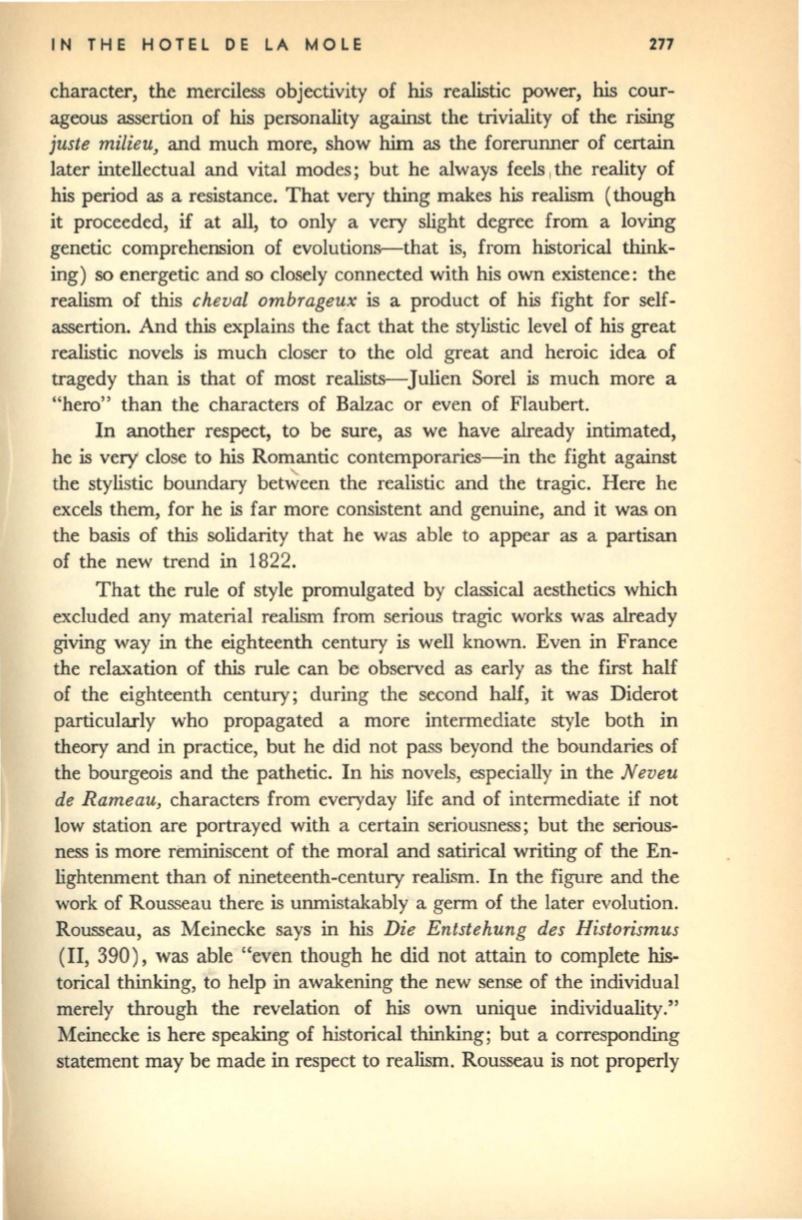
IN THE HOTEL DE LA MOLE
277
character, the merciless objectivity of
his
realistic power, his cour–
ageous assertion of his personality against the triviality of the rising
juste milieu,
and much more, show
him
as the forerunner of certain
later intellectual and vital modes; but he always feels
I
the reality of
his period as a resistance. That very thing makes his realism (though
it
proceeded, if at all, to only a very slight degree from a loving
genetic comprehension of evolutions-that is, from historical think–
ing) so energetic and so closely connected with his own existence: the
realism of this
cheval ombrageux
is a product of his fight for self–
assertion. And this explains the fact that the stylistic level of his great
realistic novels is much closer to the old great and heroic idea of
tragedy than is that of most realists-Julien Sorel is much more a
"hero" than the characters of Balzac or even of Flaubert.
In another respect, to be sure, as we have already intimated,
he is very close to his Romantic contemporaries-in the fight against
the stylistic boundary between the realistic and the tragic. Here he
excels them, for he is far more consistent and genuine, and it was on
the basis of this solidarity that he was able to appear as a partisan
of the new trend in 1822.
That the rule of style promulgated by classical aesthetics which
excluded any material realism from serious tragic works was already
giving way in the eighteenth century is well known. Even in France
the relaxation of this rule can be observed as early as the first half
of the eighteenth century; during the second half, it was Diderot
particularly who propagated a more intermediate style both in
theory and in practice, but he did not pass beyond the boundaries of
the bourgeois and the pathetic. In
his
novels, especially in the
Ne veu
de Rameau,
characters from everyday life and of intermediate if not
low station are portrayed with a certain seriousness; but the serious–
ness is more reminiscent of the moral and satirical writing of the En–
lightenment than of nineteenth-century realism. In the figure and the
work of Rousseau there is unmistakably a germ of the later evolution.
Rousseau, as Meinecke says in his
Die Entstehung des Historismus
(II, 390), was able "even though he did not attain to complete his–
torical thinking, to help in awakening the new sense of the individual
merely through the revelation of his own unique individuality."
Meinecke is here speaking of historical thinking; but a corresponding
statement may be made in respect to realism. Rousseau is not properly


